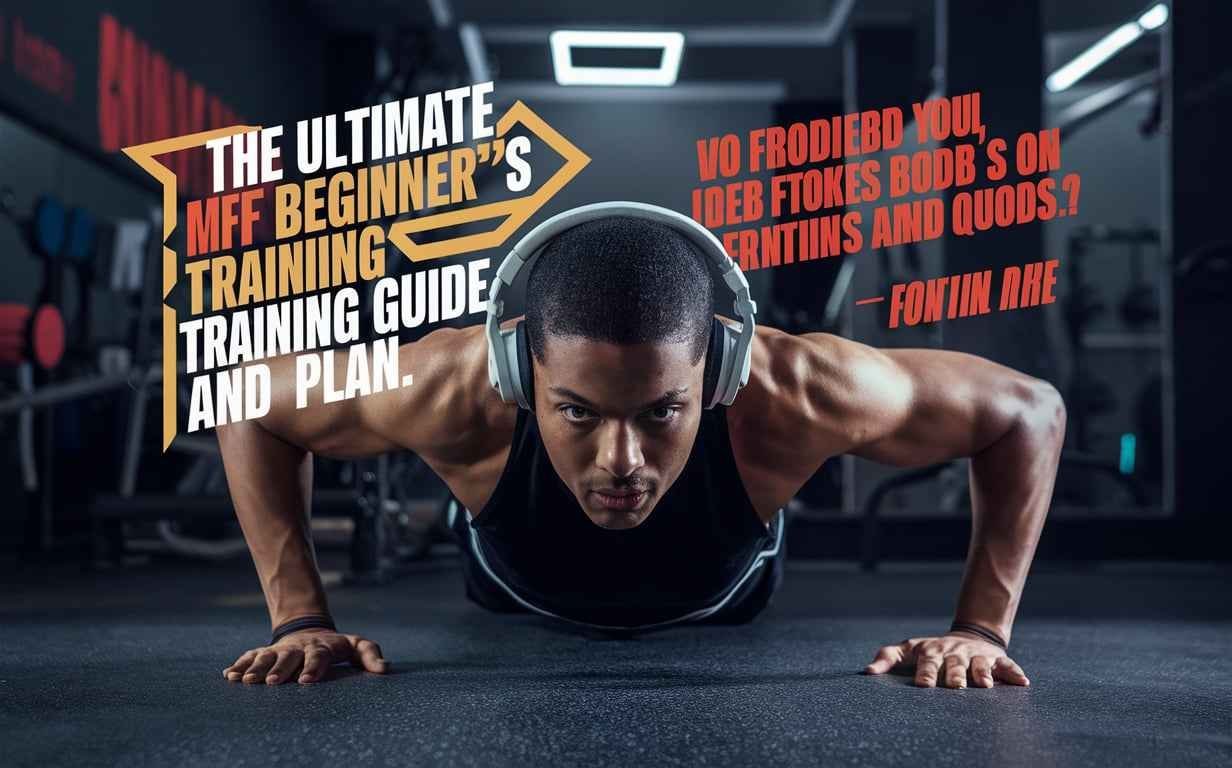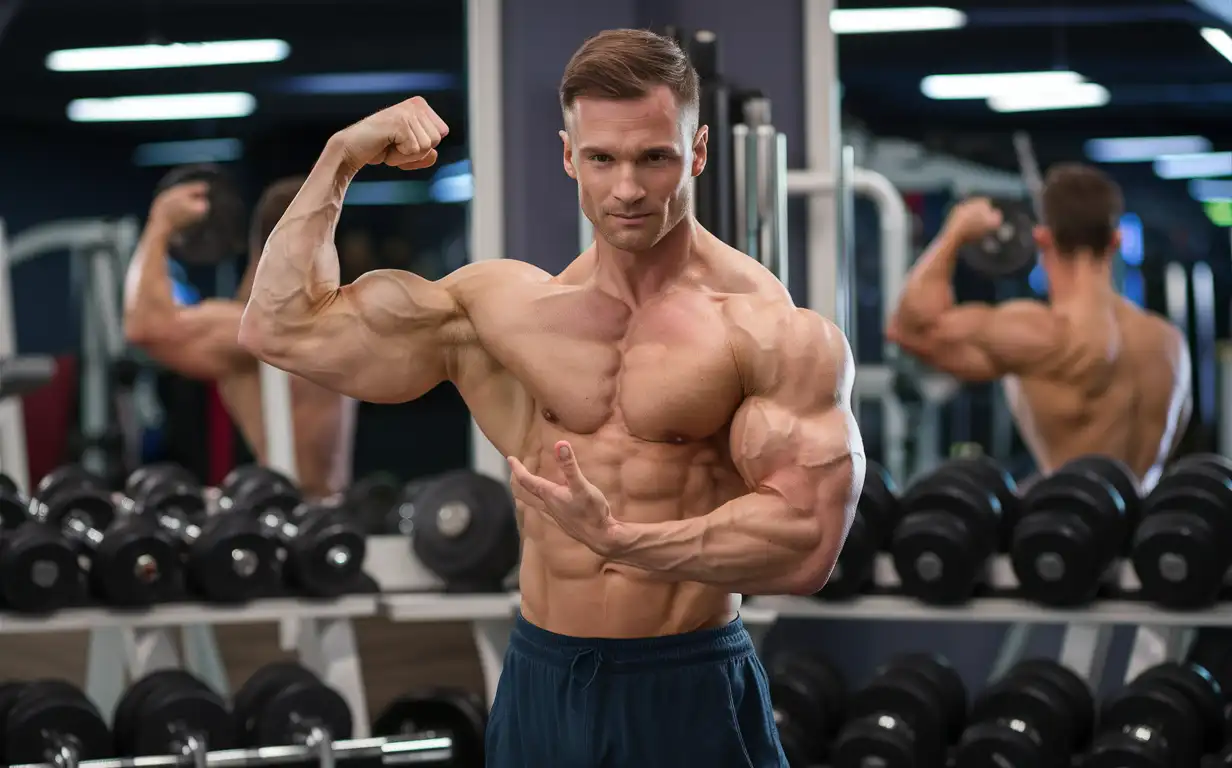The Ultimate MF Beginner’s Training Guide Plan

Welcome to your ultimate MF training guide and plan for newcomers! We understand that starting a new fitness routine can feel intimidating, so our thing with this guide is to break down everything you need to know simply, step by step. Whether you are new to exercise or want to start MF( manly fitness) training specifically, we’ll cover all the basics and give a sample 4- week training plan to help you get started on the right foot.
By following the information and guidelines in this guide, you will develop a solid foundation of MF knowledge, learn proper form and fashion for core exercises, and understand how to safely and effectively structure your exercises. We want to empower you to take control of your fitness goals and make harmonious progress. So, let’s dive in and start your trip to a stronger, healthier you!
What is MF (Male Fitness) Training?
MF training, also called male bodybuilding or physique training, focuses on building muscle size and definition through weight training. The main goals are to:
- Increase muscle mass and size through progressive overload training (gradually increasing weights/reps/sets over time)
- Increase strength for both aesthetic and practical purposes
- Lose body fat and improve muscle description through a calorie- controlled diet along with weight training
- Enhance posture, mobility, and overall constitution aesthetics by targeting all major muscle groups
Unlike other types of training, like powerlifting, which focuses further on minimal strength, MF training uses exercises, rep/ set schemes, and nutrition plans tailored specifically toward muscle growth and visible constitution changes. It’s not about how important weight you can lift but rather how your muscles look and perform under a shirt.
While adding muscle size is a primary ideal, MF training also provides tremendous overall health benefits, similar as improved bone viscosity, metabolism, injury forestallment, and more. It’s a holistic approach to fitness and life.
Equipment Needed for MF Training
To get started with MF training, the basic equipment you’ll need includes:
Gym class or home gym setup At a minimum, you will need access to colorful weight machines, free weights, and benches. utmost spa enrollments give all the necessary equipment. However, consider investing in a barbell, dumbbells, If training at home.
- Comfortable workout apparel Use moisture- wicking fabrics that allow free movement and breathability. Loose films or sweats and fitted T- shirts work well.
- Gym bag This bag stores your clothes, water bottle, phone, keys,etc., when working out.
- Water bottle Staying doused is pivotal, so bring water to every workout.
- Gym shoes Invest in a good brace ofcross-trainers or toning shoes with stability and bumper for cardio and heavy lifts.
- Hand weights If working out at home, having a set of light to moderate hand weights allows you to target lower muscle groups.
- Measuring tape Useful for keeping track of physical changes like muscle gains and fat loss over time.
- Phone/ music A great way to stay motivated during workouts is by hearkening to upbeat music or podcasts.
That covers the basics! As your training progresses, you may want to invest in fresh gear like drill gloves, strips, belts, and more. But to get started, the items over will serve.
MF Beginner Workout Split and Schedule
The most effective workout split for beginners is a full-body three-day routine. This allows enough recovery time between intense full-body sessions while providing the stimulus needed for muscle growth at the start.
A suggested weekly MF beginner workout schedule would look like this:
Monday: Full body workout A
Wednesday: Full body workout B
Friday: Full body workout A
On non-workout days, focus on foam rolling, stretching, light cardio, and active recovery so your muscles heal and rebuild. Getting adequate rest will serve you better long term versus overtraining as a newbie.
As an example, here’s what one full-body workout may look like:
- Warmup: 5 minutes of light cardio, dynamic stretches
- Compound lifts:
- Bench press 3 x 8-12 reps
- Bent over row 3 x 8-12 reps
- Squat 3 x 8-12 reps
- Isolation lifts:
- Bicep curls 3 x 12 reps
- Triceps extensions 3 x 12 reps
- Calf raises 3 x 15-20 reps
- Abs:
- Plank 3 x 30 secs
- Cable crunches 3 x 15 reps
- Cool down: Static stretches
The total workout time is generally 45-60 minutes, including warmups. You can adjust the volume and intensity as you progress and split from there. But for beginners, this full-body approach works well to overload the entire musculature progressively.
Proper Form and Technique
Using proper form when lifting weights is extremely important, especially for beginners. Not only does it maximize muscle engagement and the effectiveness of exercises, but it also prevents injury by minimizing stress on joints. Here are some key points on the proper form:
- Compound lifts: Focus on slowly lowering the weight with control on each rep’s eccentric (lowering) and concentric (lifting) portion. Don’t swing, jerk, or use momentum.
- Isolation lifts: Maintain tension in the target muscle group throughout the entire range of motion. For example, fully contract biceps at the peak of each curl.
- Core braced: Keep your core muscles engaged on all exercises like squats and rows by taking a big belly breath and bracing before each rep.
- Neutral spine: From squats to overhead presses, maintain a neutral lumbar curve in your lower back rather than rounding or hyperextending.
- Joint alignment: For example, bend at the hips, not lower back, on rows. Keep elbows tucked on presses rather than flared out.
- Range of motion: Don’t bounce weights at the bottom or lock out fully at the top on certain lifts like chest flies. Go through a full yet controlled motion.
- Breathing: Exhale on exertion during the lifting phase and inhale during the lowering or returning phase.
Video yourself from the side to check the form if needed. Always start light, focus on movement quality, and ask for a spotter’s help if needed. Form comes before load, so take your time mastering the movements.
Nutrition and Diet for MF
While working out is crucial, nutrition is just as important to see results as a beginner. The basic dietary approach is:
- Calculate TDEE( total diurnal energy expenditure) Your conserving calorie requirements are predicated on age, height, weight, and exertion position.
- Consume 500 calories above TDEE This slightly calorie fat supports muscle growth and recovery. Track input using an app like MyFitnessPal.
- Emphasize whole foods For each feed and snack, focus on spare proteins, complex carbs, healthy fats, and stringy veggies fruits.
- To meet diurnal macros, aim for 0.7- 1g protein per pound of body weight, along with 30 to 40 calories from carbs and 25 to 30 from healthy fats.
- Mess timing For steady energy situations and growth, spread nutrition over 5- 6 lower, frequent meals day rather than 2- 3 large bones.
- Supplements Whey protein, creatine, and multivitamins are generally recommended to support muscle protein conflation. Hydrate Drink half your body weight in ounces of water daily to support recovery, energy situations, and cell nutrition delivery.
Consistency with your diet and harmonious training will yield great results. Find healthy foods you enjoy for sustainable life changes. Do not get discouraged; just have fun with your new routine!
Sample 4-Week MF Beginner Training Plan
Week 1:
M/W/F: Full body workouts A and B as described above
Week 2:
M/W/F: Increase weight by 5-10% where possible. Maintain control of form. Adjust the volume if needed.
Week 3:
M/W: Upper body focus – compound push/pull supersets, isolation work
F: Lower body focus – squats, hip thrusts, calf raises
Week 4:
M/W: Lower body focus – deadlifts, lunges, calf raises
F: Upper body focus – compound presses/rows, flys, curls
Week 5:
M/W: Return to full-body workouts A and B, increasing weights
F: Focus on posterior chain – deadlifts, hip thrusts, back extensions
Week 6:
M/W/F: Continue increasing weights on full-body sessions
Add a weightlifting belt for heavy compound lifts if needed
Week 7:
M/W: Push/pull supersets, increase volume
F: Lower body giant sets, increase weights, and decrease rest
Week 8: deload week
M/W/F: Perform full-body workouts at 80% effort
Focus on active recovery – yoga, mobility work, massage, etc.
After the download, assess progress over the past 2 months. Some things to note include:
- Measurable strength and muscle size gains?
- Does body composition change visible in photos/measurements?
- Are you comfortable with increased weight on major lifts?
- Have minor muscle groups caught up adequately?
- Do you feel recovered and injury-free?
Based on the evaluation, make any necessary adjustments to the routine. Then, repeat the cycle with a higher training max and more emphasis on isolation work.
Some key points going forward:
- Track workouts and progress diligently
- Stay focused on form under heavier loads
- Gradually increase cardio to 2-3x per week
- Introduce MRPs (meal replacement powders) as needed
- Consider a creatine-loading phase
- Practice mind-muscle connection skills daily
- Continue stretching, foam rolling, and self-myofascial release
- Get 8 hours of sleep nightly for optimal recovery
Sticking to a structured plan and progressively overloading your body in a controlled manner over months/years is what leads to the best physique results naturally as a beginner. Consistency and patience are key.
Progression each week:
- Increase weight or decrease rest periods where possible
- Add an extra set on some isolation lifts
- Hold active stretches longer
Some extra tips:
- Foam roll/stretch daily
- Do 30 mins LISS cardio 2-3x weekly, such as walking
- Increase protein/carb sources around training days
- Take progress photos monthly
Listen to your body, and don’t be afraid to take an extra rest day if needed as you adapt to new training stresses. Consistency is key, so aim to stick.
Conclusion
Congratulations on taking the first step in your male fitness journey! Starting any new routine can seem overwhelming, but this guide provides a straightforward approach to getting you acclimated safely and effectively. Remember—consistency, proper form, and gradual progression are the name of the game.
You’ve got the tools to succeed with consistent effort. Trust the process and celebrate your wins, big or small. Most of all, enjoy this new chapter in your fitness journey. Good luck, and keep pushing forward!



Leave a Reply